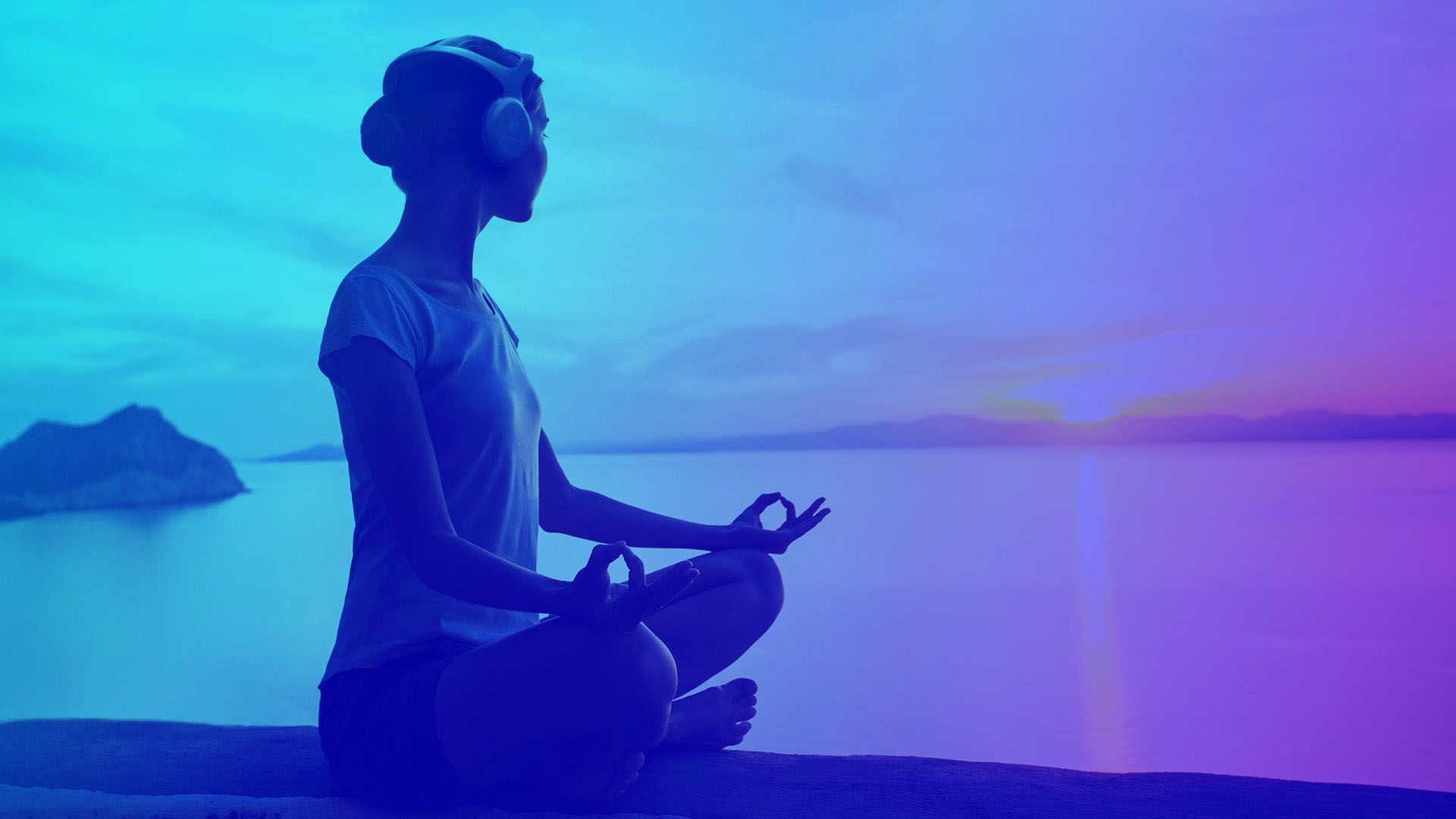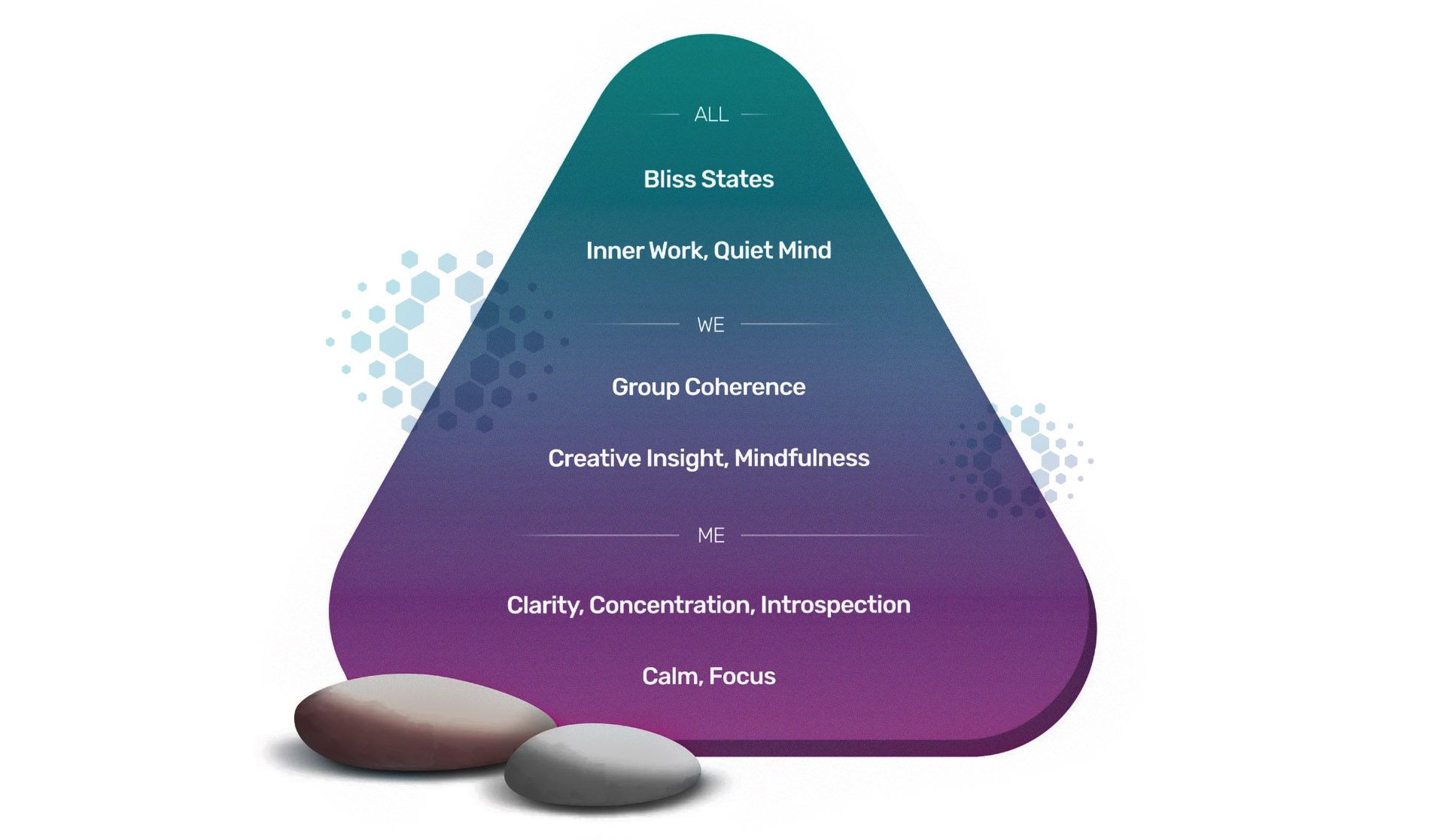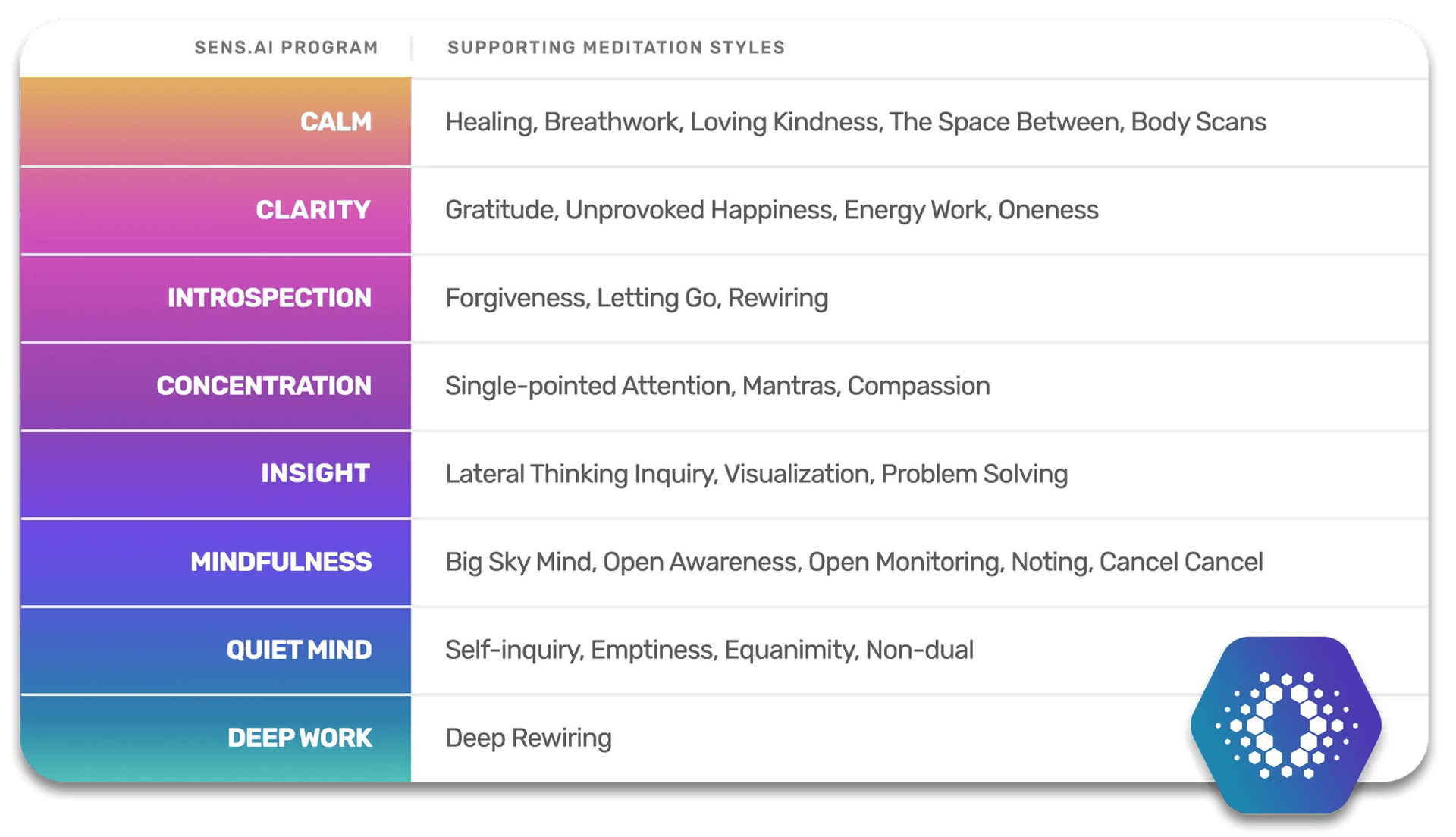MEDITATION
Which Meditation Style Is Right For Me?
Paola Telfer

Which Meditation Style is Right for You? Insights into Brainwave Patterns
Meditation apps have made meditation tracks ubiquitous. But, with so many meditations at our fingertips, how might we decide on which to spend our time? This blog summarizes how neuroscientists have categorized meditations and how Sens.ai supports different meditation styles.
Meditation Styles Categorized according to Neuroscience
For several decades, advanced meditators have been a topic of study in neuroscience. The brainwaves of meditation masters have been of keen interest. Brainwave mapping has been conducted during various styles of meditative practice.
Pioneers in this fascinating realm of investigation include Rael Cahn, Anna Wise and Jay Gunkelman.
Below is a summary of the literature that classifies meditations into at least 3 style categories according to these observed brainwave patterns. These categories are open awareness, focused attention, and automatic self-transcending. These meditation style categories cross traditions and dogmatic boundaries.
Focused Attention
Focused attention methods are high in Beta and Gamma brainwave frequencies. In the Sens.ai App this is encapsulated in the “Concentration” and “Clarity” Programs. Focused attention is about single-pointed focus on a meditation object. This object can be reciting a mantra, counting your breath or just counting numbers in the mind. The practice is to keep bringing the mind to the meditation object when it wanders. Tibetan Buddhist meditation falls into this category and can include non-conceptual objects such as compassion/loving-kindness. While the techniques vary, the overall effect on the brain is surprisingly similar. "Cortico-thalamic feedback loops modulating attention operate in the beta frequency. Beta bursts shift the system to an attention state that consequently allows for gamma synchronization and perception (Wrobel, 2000). Beta activity arises from “regional” processes that develop between nearby macro columns (Lubar, 1997). Beta activity has been associated with binding of sensory qualities into a unified perception, such as the integration of visual and auditory information (Hanslmayr et al., 2007; von Stein, Rappelsberger, Sarnthein, & Petsche, 1999; von Stein & Sarnthein, 2000). Increase of temporal and parietal 13-18 Hz beta coherence was seen across recognition tasks involving pictures, spoken words and written words. Consequently, beta1 activity during meditation practices may play a role in creating the unity of meditation experiences and could be part of all meditation categories."
Open Awareness
Open monitoring meditations result in high Theta brainwave activity. In the Sens.ai App this meditation style is incorporated in the “Mindfulness” and “Deep Work” Programs. This Open Monitoring / Open Awareness / Mindfulness style of meditation involves non-reactive monitoring of the ongoing experience. Its practice engenders reflective awareness of the true nature of emotional and cognitive patterns. Examples of open monitoring meditations include Vipassana, Zen meditation, Sahaja Yoga, and Concentrative Qigong.
"Frontal midline theta, which originates in medial prefrontal and anterior cingulate cortices, is a neural index of monitoring inner processes (Vinogradova, 2001). Frontal midline theta is reported during tasks requiring self-control, internal timing, and assessment of reward (Ishii et al., 1999); during working memory tasks (Sarnthein, Petsche, Rappelsberger, Shaw, & von Stein, 1998); and during tasks requiring memory retention and mental imagery (von Stein & Sarnthein, 2000). Frontal midline theta activity increases a few seconds before a self-initiated hand movement and reaches a peak immediately after the movement (Tsujimoto, Shimazu, & Isomura, 2006). Theta activity dynamically coordinates central executive circuits during serial subtraction (Mizuhara & Yamaguchi, 2007). Consequently, we expect frontal midline theta in a meditation that involves monitoring ongoing experience without high levels of control and manipulation of the contents of experience."

Automatic Self-Transcending
Automatic self-transcending techniques result in high synchronized alpha brainwave activity. Sens.ai encapsulates this meditation into its “Calm”, “Introspection” and “Quiet Mind” Programs.
Transcending involves the automatic settling down of mental activity to a state of quiescence. Since cognitive control increases mental activity, transcending procedures would need to involve minimal cognitive control—said to be automatic or effortless.
Examples of Automatic Self-Transcending techniques include Transcendental Meditation (TM) and Natural Stress Relief (NSR).
Noteworthy is the fact that research has shown that "The automaticity of the TM technique is reflected in research reporting the lack of a novice/expert dichotomy among TM meditators, in contrast to research on other meditation traditions". This means that meditations in this category do not require practice or skill to master. The consciousness simply responds to the technique effectively the first time the technique is initiated in the mind.
"Alpha activity in association areas may represent liveliness on the “screen of consciousness,” which provides context for grouping isolated elements into the unity of experience. For instance, when solving a problem by intuition or insight, alpha activity increases first, followed by increases in the gamma band when the idea comes to mind (Kounios & Beeman, 2009). Also, cross frequency coherence—the synchrony between alpha, beta and gamma—increases with higher cognitive load on a continuous mental arithmetic task. Cross frequency coherence is considered important for integrating anatomically distributed processing in the brain."
The Sens.ai App Approach
Sens.ai’s App, will guide you as you learn to develop continuous concentration. In the beginning, the best meditation objects are often the simplest - focus on the breath, body scans, and ‘the space between the breath or between body parts’ are suitable objects of focus.
As you start developing sustained concentration, objects of meditation can still include breath work, body scans, ‘the space between’, but you may add ‘noting’ methods. Noting is a form of mindfulness meditation; an example of noting is observing with emotional neutrality each moment of seeing, hearing and feeling. Compassion is a great first non-conceptual object of concentration.
As you move into developing effortless concentration you can go deeper and you should consider objects of meditation that include Letting Go, Forgiveness, and Gratitude. Deep insights can be gained. This is where rewiring for happiness can occur.
Then while developing blissful and single-pointed concentration, you may incorporate objects of meditation that include Open Monitoring (just being present with whatever arises), Limitless Potentiality (Emptiness) & Unprovoked Happiness (Bliss).

Sens.ai includes an option to listen to a version of each of these powerful meditations during Boost Sessions.
DISCLAIMER
This content is for informational and educational purposes only. It is not intended to provide medical advice or to take the place of such advice or treatment from a personal physician. All readers/viewers of this content are advised to consult their doctors or qualified health professionals regarding specific health questions. Neither the author or Sens.ai, the publisher of this content takes responsibility for possible health consequences of any person or persons reading or following the information in this educational content. All viewers of this content, especially those taking prescription or over-the-counter medications, should consult their physicians before beginning any nutrition, supplement or lifestyle program.